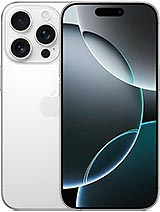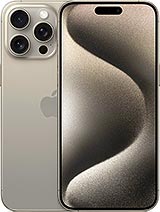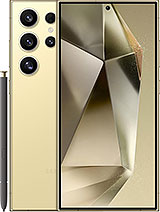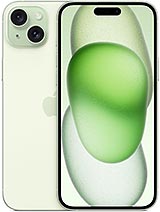Apple iPhone 16 Plus review
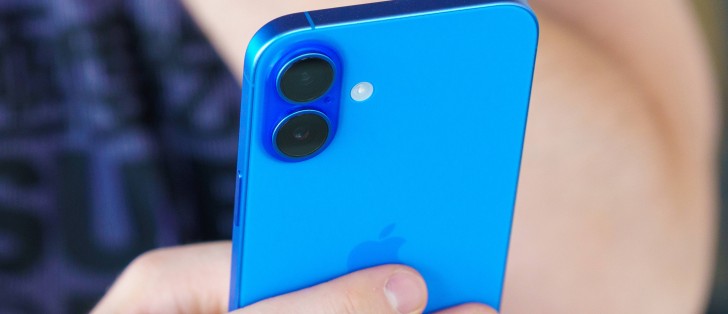
Apple iOS 18
Apple iPhone 16, 16 Plus, 16 Pro and 16 Pro Max come with the latest available Apple iOS 18 pre-installed. While Apple tried to present this new iteration as one of the biggest redesigns, it doesn't feel that big in day-to-day use. However, allowing for deep personalization options across the homescreens and interface does have the potential to make the UI rather unique and different, something which has been lacking on iOS through the years.
All iPhones will get at least five years of iOS updates, which has been an Apple thing for years.
You can check out our iOS 18 feature walkthrough for a deeper dive in what's new in this generation of the iPhone OS.
Connectivity
The iPhone 16 Plus comes with a variety of network connectivity options depending on your region. In certain countries, Apple also offers satellite connectivity on the iPhone 16 Plus for emergency pings outside of cell range and Roadside Assistance via satellite (subscription required).
Emergency SOS and Find My via satellite do still have some regional limitations, too.
For local connectivity, the iPhone 16 Plus has dual-band Wi-Fi 7 as well as Bluetooth 5.3 with LE support. There is NFC on board for things like Apple Pay and Name Drop contact sharing. The iPhone 16 Plus also has a second-generation Apple Ultrawideband (UWB) chip. It enables precise Find My with directional arrows and has up to three times increased range compared to the original Apple U1 chip. You can also use precision finding in a crowd with Find My Friends. We should note that the UWB chip and its functionality are not available in every market and are disabled in some countries due to regulatory issues.

The Type-C port on the iPhone 16 and 16 Plus is backed up by a USB 2.0 data connection, which means a theoretical max transfer speed of 480 Mbps. You have to go with a Pro model for a faster USB connection.
Video output is supported, however. It uses the Display port DP (up to 4K) via Type-C Alt mode, which means that most standard Type-C hubs with a video interface should be able to get an image from the phone. By default, you get a mirror of the display without any other fancy options like a dedicated desktop mode or anything of the sort. In other words, it does a simple screen mirror for the UI.
Performance, benchmarks, stress tests
The big upgrade this year for the iPhone 16 and 16 Plus is the Apple A18 chipset, which is two generations ahead of what the iPhone 15 and 15 Plus had - the A16. This is a second-gen 3nm chip that is both more powerful and more efficient.
The Apple A18 has a six-core processor with two performance cores working at 4.04GHz and four efficient cores clocked at 2.2GHz. The GPU has a 5-core design and supports improved hardware raytracing among others. Both phones now come with 8GB of RAM.
Long story short, the A18 CPU is 30% faster than the iPhone 15 CPU and 60% faster than the iPhone 12 CPU. The GPU is 40% faster than the iPhone 15 and twice as fast as the iPhone 12. Focusing on comparing just the iPhone 16 and 15, the 2024 phone can offer the same CPU performance while using 30% less power and the same GPU performance while using 35% less power. Apple also improved the system memory bandwidth by 17% for AI purposes.
Apple improved the thermals of the iPhone 16 and 16 Plus and says that they achieve 30% higher sustained performance. This included reworking the motherboard and including a thermal substrate made from 100% recycled aluminum.
Some games that were incompatible with the iPhone 15 and 15 Plus are now compatible with the mainstream iPhones thanks to all the hardware upgrades - we are talking about Resident Evil 7: Biohazard and Assassin's Creed: Mirage. Honor of Kings: World will be available next year with an ultra graphics mode optimized for iPhone 16. The GPU also has hardware accelerated ray tracing, for games like War Thunder Mobile.
And now, let's look at some benchmark scores!
We have decided to add some of the most recent Android flagships for comparison, even if the cross-platform benchmarks should always be taken with a huge pinch of salt.
The new Apple A18 CPU inside the iPhone 16 Plus does score about 20% more than the A16 inside the iPhone 15 Plus.
There is also between 30% and 60% jump in GPU performance depending on the 3D test.
You can also see the massive jump between the different generations of NPUs inside the iPhone chips via the Geekbench AI scores.
Apple promised an improvement in sustained performance and has delivered.
The iPhone 16 Plus scored 80% of CPU and 89% of GPU stability. The GPU stability is up from 71% on the iPhone 15, which is quite nice.
Overall, the iPhone 16 Plus offers flagship-grade performance and stability. It doesn't get terribly hot even after prolonged stress tests, and we do think it will be marvelous even as a gaming device.
Reader comments
- Pogi
- 29 Apr 2025
- jsm
Does iPhone 16 Plus also has a Heating problem/issue? anyone exp. even normal use (excluding gaming, Heavy apps.)?
- jack parsa
- 19 Nov 2024
- jpU
Apple’s pricing strategy is indeed a testament to their mastery in balancing innovation and profitability. By carefully selecting which features to introduce across their lineup, they ensure that every model appeals to a specific audience while ma...
- jack parsa
- 19 Nov 2024
- jpU
The iPhone 16 Plus indeed occupies an interesting spot in the lineup. It’s true that it offers a larger screen and the best battery life among the iPhones, which makes it an appealing choice for users who prioritize media consumption, gaming, or e...

